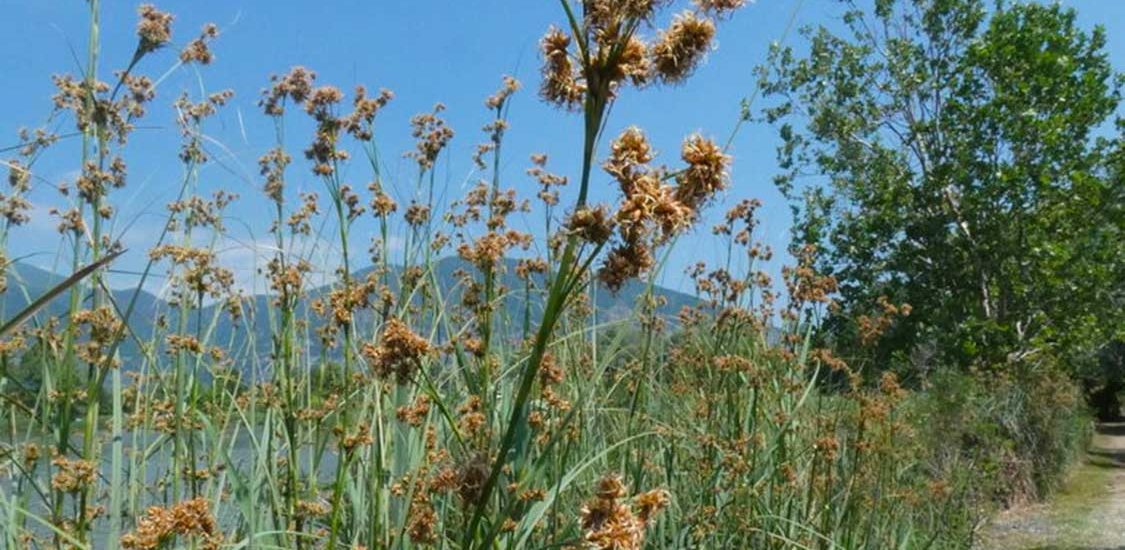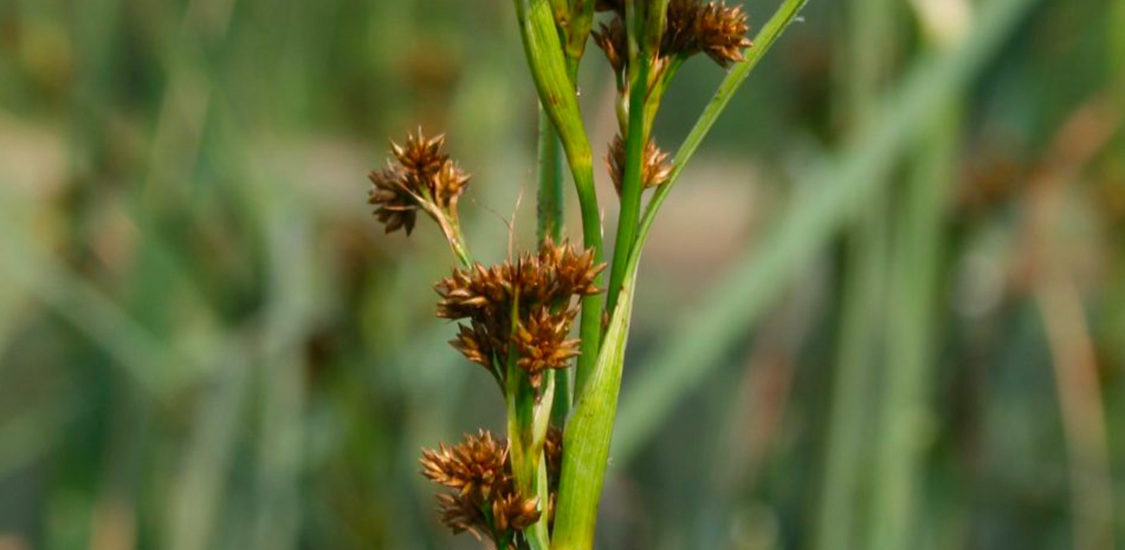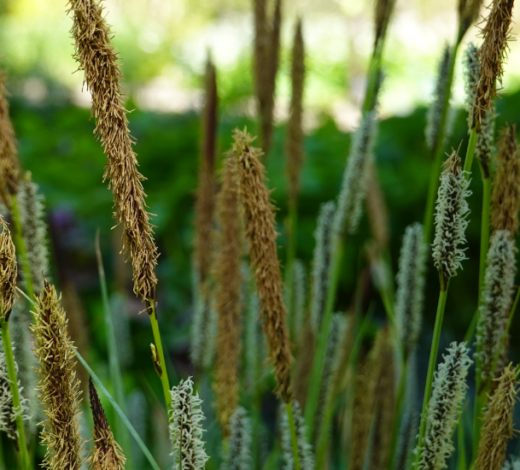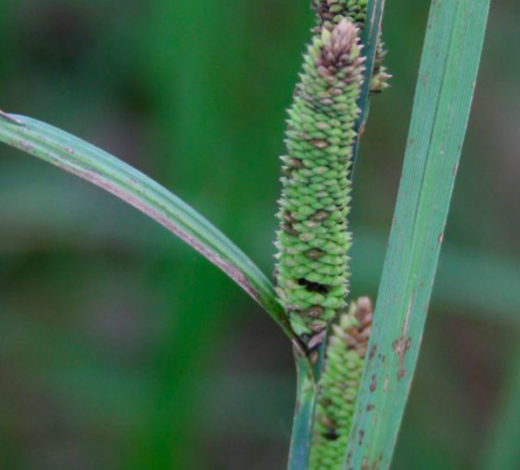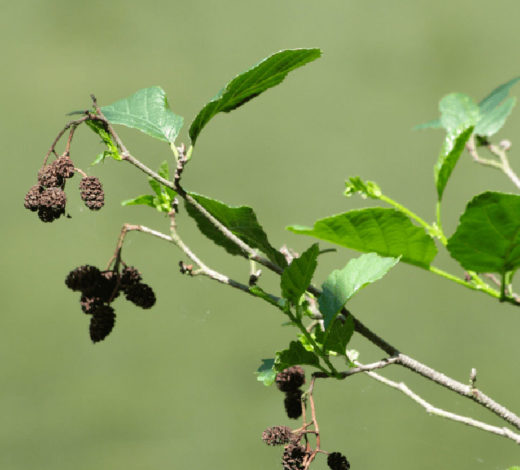Swamp Sawgrass
(Claudium mariscus)
A species protected by Regional Law 10/2008.
A grassy plant with an upright stem extending from a horizontal underground rhizome.
Family
Cyperaceae
Description
A grassy plant with an upright stem extending from a horizontal underground rhizome. The stem is 80–200 cm tall with a cylindrical shape at the bottom, roughly triangular and fluted at the top, the end of which carries the inflorescence. The leaves, of a greenish-grey colour, are evergreen and wrap the stem with rough, sharp primary vein and margins. The inflorescence is compound and bears small brown spikes joined in glomeruli with 2–6 flowers with the male at the top. The fruit consists of a brown achene (a dry fruit that does not open when ripe). Flowering period: May–June.
Habitat
It also grows in damp meadows, marshes, and neutral-basic peat bogs, sometimes in salt-poor soil from sea level to about 800 m. The species is subcosmopolitan and found in all regions of Italy, although its population is declining, primarily due to reclamation of marshy areas and the eutrophication of damp areas. Marsh vegetation dominated by Cladium mariscus refers to European priority habitat 7210* ‘Calcareous fens with Cladium mariscus and species of the Caricion davallianae’.
Uses
In the past, it was used in some Northern European regions to cover roofs or as straw for animals. Farmers used the leaves for wicker chairs, mats, and wrapping wine bottles.
Etymology
The genus name derives from the Greek ‘klados’ (twig), while the species name, in Latin, means ‘marshy’.
Observation
It is present in the Reserve within the weirs, internal dams, and partially underground bodies of water. It can also be seen along the path to the birdwatching tower.
